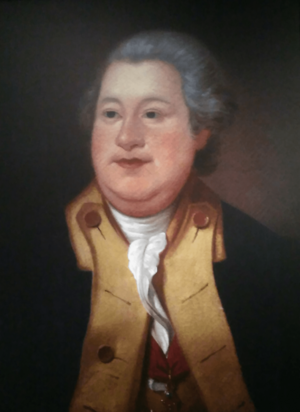Manuel da Maia facts for kids
Quick facts for kids
Manuel da Maia
|
|
|---|---|
 |
|
| Chief Engineer of the Kingdom | |
| In office 24 July 1754 – 17 September 1768 |
|
| Monarch | Joseph I |
| Preceded by | Manuel de Azevedo Fortes |
| Succeeded by | Miguel Angelo de Blasco |
| Chief Guardian of the Royal Archives | |
| In office 12 February 1745 – 17 September 1768 |
|
| Monarch | Joseph I |
| Preceded by | Martinho de Mendonça de Pina e Proença |
| Succeeded by | José de Seabra da Silva |
| Personal details | |
| Born | 5 August 1677 (bap.) Lisbon, Kingdom of Portugal |
| Died | 17 September 1768 (aged 91) Lisbon, Kingdom of Portugal |
| Resting place | Convent of São Pedro de Alcântara, Bairro Alto, Lisbon |
| Occupation | Architect and engineer |
| Signature |  |
Manuel da Maia (born August 5, 1677 – died September 17, 1768) was an important Portuguese architect, engineer, and archivist. He is best known for leading the huge effort to rebuild Lisbon after a terrible earthquake in 1755. He worked alongside other famous engineers like Eugénio dos Santos and Carlos Mardel.
Contents
Manuel da Maia's Career
Manuel da Maia had a long and successful career. He held several important jobs in Portugal.
Early Career and Teaching
Maia was the head of the Aula de Fortificação. This was an academy in Lisbon where military engineering and architecture were taught. He even taught King José I of Portugal when the king was still a prince. From 1703 to 1704, Maia also supervised the building of forts in the Estremadura province.
Working with Royal Archives
On November 12, 1745, Maia was given a very important role. He became the High-Guardian of the Torre do Tombo. This place was Portugal's main archive, library, and where many valuable historical documents were kept.
Building Projects and High Honors
In 1747, Maia helped build a new hospital in Caldas da Rainha. It was called the Queen Leonor of Viseu Thermal Hospital. He followed the plans made by Eugénio dos Santos.
Because of his successful work, Maia was named the High-Engineer of the Kingdom in 1754. This was a very respected position. He also became a general in the Portuguese army and a Fidalgo (a noble) in the Royal Household. After this, Maia started managing the building of the Águas Livres Aqueduct. This was a huge public project at the time.
Rebuilding Lisbon After the Earthquake
A massive earthquake hit Lisbon in 1755, destroying almost the entire city. Manuel da Maia took charge of coordinating the rebuilding work. His designs for the new Lisbon Baixa (the downtown area) are famous. They are seen as some of the first modern and well-planned city designs in Western history.
Saving Portugal's History
Maia also played a heroic role in saving the contents of the Torre do Tombo after the earthquake. Even though he was 75 years old, he personally led a team to São Jorge Castle. This is where the archives were located. He managed to save nearly 90,000 historical documents! These documents were collected between 1161 and 1696.
He quickly ordered temporary shelters to be built to store these important papers. He also asked Sebastião José de Carvalho e Melo, who was King Joseph I’s prime minister, for a new permanent home for the archives. Eventually, the archives were moved to the Convent of São Bento. Today, this building houses the parliament of Portugal.
Images for kids
See also
 In Spanish: Manuel da Maia para niños
In Spanish: Manuel da Maia para niños

